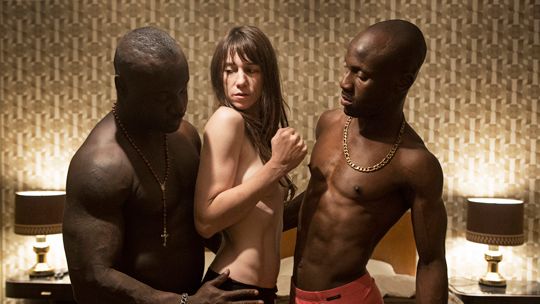
There’s not a year goes by without a controversy surrounding ‘real sex’ hitting the Cannes Film Festival, where ‘real sex’ here means actual, factual sexual activity between two actors rather than the vague implicit fumbling we’re used to seeing on the big screen. In no other area of life would this warrant mention (“Did you hear about that new couple Dan and Sophie? They have real sex!”) but in cinema, even fifty years after filmmakers began experimenting with the technique, ‘real sex’ remains a taboo.
No other aspect of human nature, however violent or perverse, provokes the reaction in filmmakers that sex does. No other behaviour sends camera operators so quickly above the shoulder; no other behaviour sends editors so promptly to their B-roll material. As an audience, we’ve grown so accustomed to this prudishness that we now expect it, and find ourselves shocked when it’s flouted. Imagine for a second if the same squeamishness was applied to some other activity — if eating could only be depicted in a series of wink-wink, nudge-nudge shots of bread boards, table cloths and cutlery drawers.
This year, it was the turn of Alain Guiraudie’s Stranger by the Lake to arouse more than just the interests of festivalgoers with the promise of a fleeting glimpse of sexual activity. As the herd queued patiently almost two hours before the movie’s scheduled start time, they whispered amongst themselves about the rumoured transgressions. They referred euphemistically to the movie as ‘that gay porn film’, proving yet again that straight people seem incapable of imagining what gay pornography actually looks like. (Spoiler alert: not a lot like Stranger by the Lake.)
As it turned out, the film contained all of ten seconds of explicit sexual material: one brief shot of a hand bringing a penis to orgasm, and another of a penis sliding in and out of a mouth. Impressively, the audience managed to refrain from any kind of audible gasping at such sights, but nonetheless both moments dramatically interrupted the film’s narrative flow — not because of their content, but due to the mechanics of their inclusion.
For whatever reason (Diffidence? Inability to perform? Unsightly genitalia?) the film’s lead actors were replaced with body doubles for these shots, leaving a sharp divide between the graphic, disembodied close-ups and the carefully blocked wide angles in which the stars actually appeared. By trying to make the film more authentic, Guiraudie inadvertently rendered Stranger by the Lake considerably faker, so clear was it that stunt cocks were playing their part in the action.
Worse, the deliberate isolation of such money shots — both here and in other ‘real sex’ films like Antichrist and The Idiots — is quickly refashioning the male erection as the sole signifier of bona fide sexual intercourse. The cinematic whitewashing of erections on screen for so many years has created a fascination with engorgement, and ensured that an erect penis is now the lone distinguishing characteristic of ‘real sex’.
This year’s Palme d’Or winner, Abdellatif Kechiche’s beautiful La vie d’Adele, contains considerably more ‘real sex’ than Stranger by the Lake does, and without the distraction of stunt doubles. Yet I’ve not seen a single review refer to such scenes as ‘real sex’, nor did I hear the phrase excitedly whispered in the film’s queue. Perhaps that’s because the unsimulated activity in Kechiche’s film is between two women, and — in the language of cinema — is therefore intrinsically ‘unreal’, lacking as it does any kind of phallic contribution.
With the ‘real sex’ trend now beset with just as many silly compromises as traditional Hollywood fucking, it seems that yet another change of approach is required. Lars von Trier is shooting each of the sex scenes in Nymphomaniac twice, once with his A-list cast faking it and once with porn performers going the distance. The two will later be grafted together digitally. That might seem extreme, but for now it could be the only way to shoot convincing sex scenes and still attract acting talent of a higher calibre than, say, James Deen.
(Full disclosure: I haven’t seen The Canyons yet, he may well be Brando.)
Ultimately, it feels like we’re talking about a question of morals. If Chloë Sevigny makes an artistic commitment to The Brown Bunny and gets called a prostitute for her trouble, why should we expect other actors to follow her lead? What’s needed is a more pragmatic approach to sexuality on screen, on the part of filmmakers and filmgoers alike. For now, we get the cinematic sex we deserve.